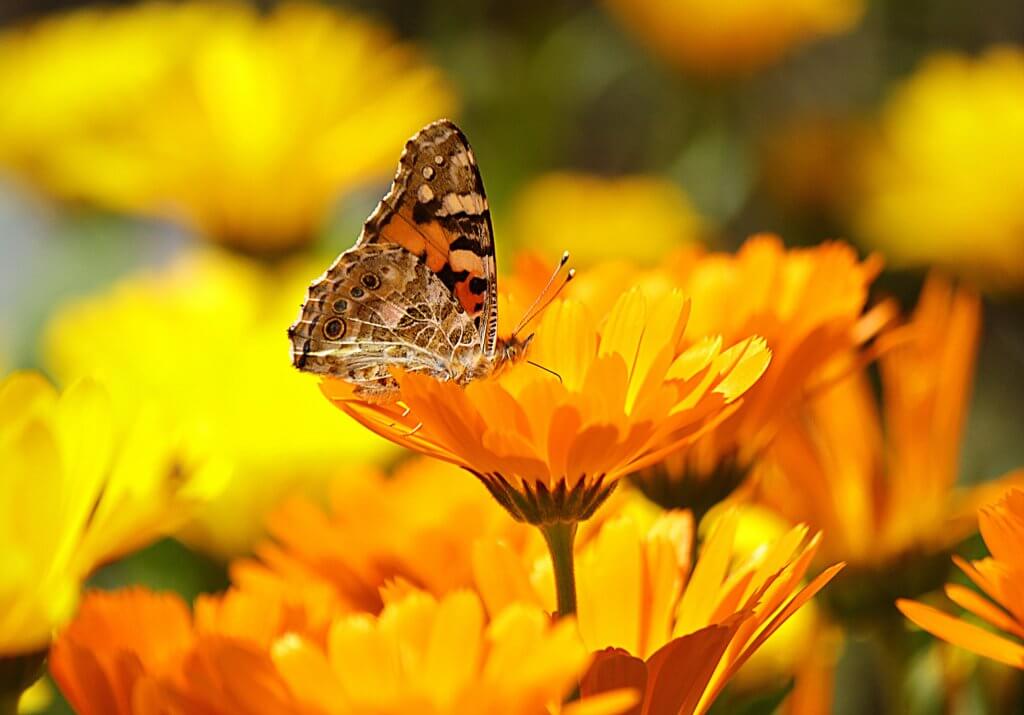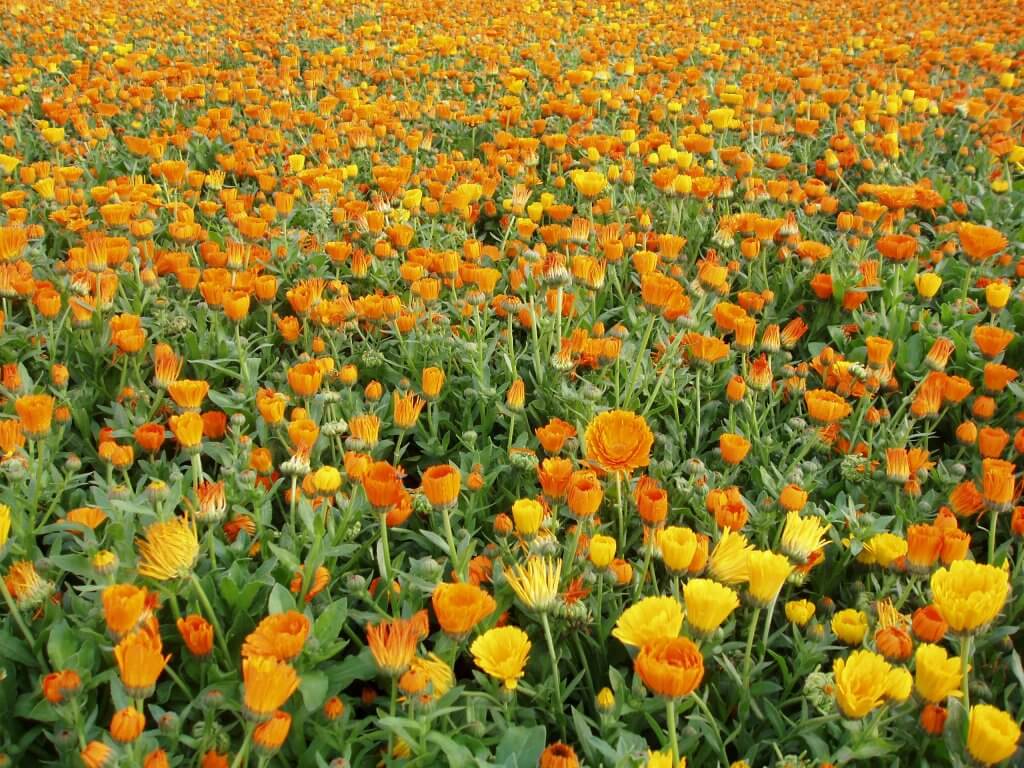Calendula (Calendula officinalis) is a bright and beautiful herbaceous, perennial, otherwise known as pot marigold. A number of common names include desert marigold, ruddles, corn marigold and marsh marigold. It is native to large areas of western Europe, including the Canary Islands and Cape Verde and also southwestern Asia. You can usually find them growing wild on roadsides, waste grounds and areas of scrubland.
Calendula is a member of the daisy family, as its bold and beautiful flowers have a similar petal structure. Flowers are generally orange or yellow, although some cultivated varieties may have different hues. The plant can grow up to 60cm. It consists of sparsely arranged stems emerging from a base of oblong leaves with fine hairs.

Cultivation and History of Calendula
Calendula is widely used today in the culinary and medicinal industries. Calendula oil is harvested for use in many anti-inflammatory medicines. You will find the petals still being used today as a colorant and flavoring.
The flowers have also been used extensively throughout Roman and Greek history. Women would make attractive garlands and crowns.
Easy to grow and care for, calendulas are a popular addition to many gardens. They prefer a sunny spot and will grow will in many soils. Calendula is technically an annual, however it will self seed after flower production in early fall. The flowers will tend to bloom best on hot, dry and sunny days. This is also the optimum time for harvesting and picking. In warmer climates the flowers are likely to remain for most of the year.

Toxicity
The leaves and flowers of calendula are not toxic. They may however cause an allergic reaction if you have sensitivity to similar flowers in the same family, for example chrysanthemums or daisies. If you are pregnant do not take calendula as it could cause damage to your child or even miscarriage.
Uses
Culinary uses of Calendula
The flowers of calendula have a long culinary history in a wide range of cultures. They are added to German broths, stews and sauces, and many Mediterranean dishes. Add color and variety to salads and garnishes by using calendula flowers. They also create a great look when baked into cakes and cookies. Use the flowers within herbal teas to give a light, pleasant flavor and bright color.
Products created with Calendula
The bright petal color was recognised as a dye within ancient times. Many middle eastern and Indian cultures would use the petals to color foods, fabrics and even cosmetics. Today you will notice that the essential oils and colorants within calendula are used in lots of cosmetic products. From perfumes to facial moisturisers and soaps.

Medicinal uses of Calendula
From anti-inflammatory to anti-microbial, calendula contains many substances with beneficial properties. The oil is used today in many modern medicines that treat many conditions. These include acne, controlling bleeding, ear infections, ulcers and skin inflammations.
Many ancient cultures recognised the benefits of calendula and used it within many herbal remedies. Ancient Greek and Indian cultures used lightly crushed and moist handfuls of the flowers to apply to small wounds and sores on the skin. The antibacterial properties helped to prevent infection and provided a soothing effect. You can also treat abdominal pains and cramps with calendula.
Did you know…
Viking women would often use calendula oils and ointments to dye their hair. It would give fair hair a more bright and golden glow, symbolizing youth and good health.
Conclusion
In conclusion calendula flowers have a variety of interesting uses that you can experiment with. For example, dying wools and fabrics, or creating homemade soaps and scented balms. Dry and store the flowers to use at a later date, however make sure to check for mould. Calendulas are a beautiful, bright addition to any garden, the flowers attract pollinators and have a beautiful mild scent.
—————Written by Hannah Sweet
Hannah is a freelance writer and graphic designer from the UK. With a penchant for travelling, photography and all things botanical, she enjoys writing about a wealth of topics and issues, from conservation and slow living, to design and travel. Learn more about her writing and design services at www.sweetmeanders.co
Many of our readers find that subscribing to Eat The Planet is the best way to make sure they don't miss any of our valuable information about wild edibles.
See our privacy policy for more information about ads on this site






